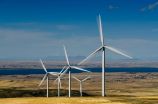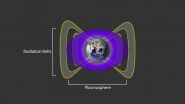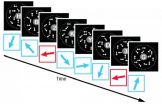(Press-News.org) CORVALLIS, Ore. - The use of renewable energy in the United States could take a significant leap forward with improved storage technologies or more efforts to "match" different forms of alternative energy systems that provide an overall more steady flow of electricity, researchers say in a new report.
Historically, a major drawback to the use and cost-effectiveness of alternative energy systems has been that they are too variable - if the wind doesn't blow or the sun doesn't shine, a completely different energy system has to be available to pick up the slack. This lack of dependability is costly and inefficient.
But in an analysis just published in The Electricity Journal, scientists say that much of this problem could be addressed with enhanced energy storage technology or by developing "hybrid" systems in which, on a broader geographic scale, one form of renewable energy is ramping up even while the other is declining.
"Wind energy is already pretty cost-competitive and solar energy is quickly getting there," said Anna Kelly, a graduate student in the School of Public Policy at Oregon State University, and an energy policy analyst. "The key to greater use of these and other technologies is to match them in smart-grid, connected systems.
"This is already being done successfully in a number of countries and the approach could be expanded."
For instance, the wind often blows more strongly at night in some regions, Kelly said, and solar technology can only produce energy during the day. By making more sophisticated use of that basic concept in a connected grid, and pairing it with more advanced forms of energy storage, the door could be opened for a much wider use of renewable energy systems, scientists say.
"This is more than just an idea, it's a working reality in energy facilities around the world, in places like Spain, Morocco and China, as well as the U.S.," Kelly said. "Geothermal is being paired with solar; wind and solar with lithium-ion batteries; and wind and biodiesel with batteries. By helping to address the price issue, renewable energy is being produced in hybrid systems by real, private companies that are making real money."
Advanced energy storage could be another huge key to making renewable energy more functional, and one example is just being developed in several cooperating states in the West. Electricity is being produced by efficient wind farms in Wyoming; transmitted to Utah where it's being stored via compressed air in certain rock formations; and ultimately used to help power Los Angeles.
This $8 billion system could be an indicator of things to come, since compressed air can rapidly respond to energy needs and be readily scaled up to be cost-competitive at a significant commercial level.
"There are still a number of obstacles to overcome," said Joshua Merritt, a co-author on the report and also a graduate student in mechanical engineering and public policy at OSU. "Our transmission grids need major improvements so we can more easily produce energy and then send it to where it's needed. There are some regulatory hurdles to overcome. And the public has to more readily accept energy systems like wind, wave or solar in practice, not just in theory."
The "not in my back yard" opposition to renewable energy systems is still a reality, the researchers said, and there are still some environmental concerns about virtually any form of energy, whether it's birds killed by wind turbine rotors, fish losses in hydroelectric dams or chemical contaminants from use of solar energy.
The near future may offer more options, the researchers said. Advanced battery storage technologies are becoming more feasible. Wave or tidal energy may become a real contributor, and some of those forces are more predictable and stable by definition. And the birth of small, modular nuclear reactors - which can be built at lower cost and produce no greenhouse gas emissions - could play a significant role in helping to balance energy outflows from renewable sources.
The long-term goal, the report concluded, is to identify technologies that can work in a hybrid system that offers consistency, dependability and doesn't rely on fossil fuels. With careful matching of systems, improved transmission abilities and some new technological advances, that goal may be closer than realized, they said.
"With development, the cost of these hybrid systems will decrease and become increasingly competitive, hopefully playing a larger role in power generation in the future," the researchers wrote in their conclusion.
INFORMATION:
A digital image of a wind farm is available online: https://flic.kr/p/qaqLaq
Two donuts of seething radiation that surround Earth, called the Van Allen radiation belts, have been found to contain a nearly impenetrable barrier that prevents the fastest, most energetic electrons from reaching Earth.
The Van Allen belts are a collection of charged particles, gathered in place by Earth's magnetic field. They can wax and wane in response to incoming energy from the sun, sometimes swelling up enough to expose satellites in low-Earth orbit to damaging radiation. The discovery of the drain that acts as a barrier within the belts was made using NASA's ...
PROVIDENCE, R.I. [Brown University] -- A new study led by Brown University reports that older learners retained the mental flexibility needed to learn a visual perception task but were not as good as younger people at filtering out irrelevant information.
The findings undermine the conventional wisdom that the brains of older people lack flexibility, or "plasticity," but highlight a different reason why learning may become more difficult as people age: They learn more than they need to. Researchers call this the "plasticity and stability dilemma." The new study suggests ...
VIDEO:
When people hear another person talking to them, they respond not only to what is being said -- those consonants and vowels strung together into words and sentences --but also...
Click here for more information.
When people hear another person talking to them, they respond not only to what is being said--those consonants and vowels strung together into words and sentences--but also to other features of that speech--the emotional tone and the speaker's gender, for instance. ...
Older people can actually take in and learn from visual information more readily than younger people do, according to new evidence reported in the Cell Press journal Current Biology on November 26. This surprising discovery is explained by an apparent decline with age in the ability to filter out irrelevant information.
"It is quite counterintuitive that there is a case in which older individuals learn more than younger individuals," says Takeo Watanabe of Brown University.
Older individuals take in more at the same time as the stability of their visual perceptual ...
Enzymes inside cells that normally repair damaged DNA sometimes wreck it instead, researchers at the Stanford University School of Medicine have found. The insight could lead to a better understanding of the causes of some types of cancer and neurodegenerative disease.
In a paper to be published online Nov. 27 in Molecular Cell, the researchers explain how the recently discovered mechanism of DNA damage occurs when genetic transcripts, composed of RNA, stick to the DNA instead of detaching from it.
Certain enzymes, called endonucleases, are attracted to DNA/RNA hybrids ...
Researchers at the Center for iPS Cell Research and Application (CiRA), Kyoto University, show that induced pluripotent stem (iPS) cells can be used to correct genetic mutations that cause Duchenne muscular dystrophy (DMD). The research, published in Stem Cell Reports, demonstrates how engineered nucleases, such as TALEN and CRISPR, can be used to edit the genome of iPS cells generated from the skin cells of a DMD patient. The cells were then differentiated into skeletal muscles, in which the mutation responsible for DMD had disappeared.
DMD is a severe muscular degenerative ...
Mutations in the KRAS gene have long been known to cause cancer, and about one third of solid tumors have KRAS mutations or mutations in the KRAS pathway. KRAS promotes cancer formation not only by driving cell growth and division, but also by turning off protective tumor suppressor genes, which normally limit uncontrolled cell growth and cause damaged cells to self-destruct.
A new University of Iowa study provided a deeper understanding of how KRAS turns off tumor suppressor genes and identifies a key enzyme in the process. The findings, published online Nov. 26 in the ...
SALT LAKE CITY--Researchers from Huntsman Cancer Institute (HCI) at the University of Utah (U of U) discovered the unusual role of lactate in the metabolism of alveolar soft part sarcoma (ASPS), a rare, aggressive cancer that primarily affects adolescents and young adults. The study also confirmed that a fusion gene is the cancer-causing agent in this disease. The research results were published online in the journal Cancer Cell Nov. 26, 2014.
ASPS tumor cells contain a chromosomal translocation--strands of DNA from two chromosomes trade places. The two strands fuse ...
MINNEAPOLIS / ST. PAUL (11/26/2014)--During a thunderstorm, we all know that it is common to hear thunder after we see the lightning. That's because sound travels much slower (768 miles per hour) than light (670,000,000 miles per hour).
Now, University of Minnesota engineering researchers have developed a chip on which both sound wave and light wave are generated and confined together so that the sound can very efficiently control the light. The novel device platform could improve wireless communications systems using optical fibers and ultimately be used for computation ...
In recent years it has been established that copper plays an essential role in the health of the human brain. Improper copper oxidation has been linked to several neurological disorders including Alzheimer's, Parkinson's, Menkes' and Wilson's. Copper has also been identified as a critical ingredient in the enzymes that activate the brain's neurotransmitters in response to stimuli. Now a new study by researchers with the U.S. Department of Energy (DOE)'s Lawrence Berkeley National Laboratory (Berkeley Lab) has shown that proper copper levels are also essential to the health ...







